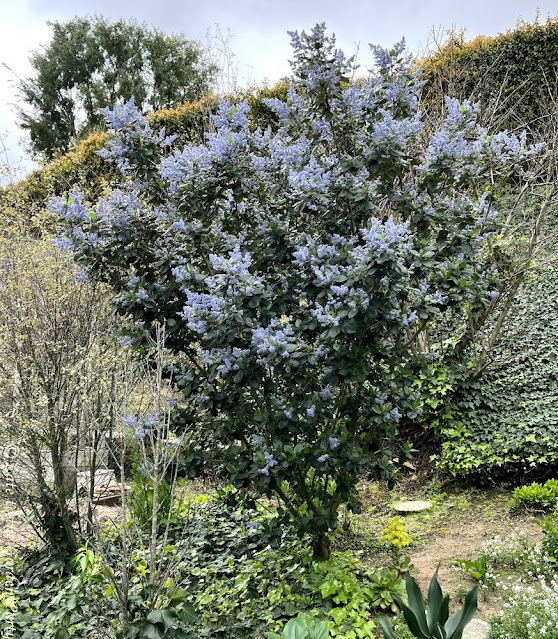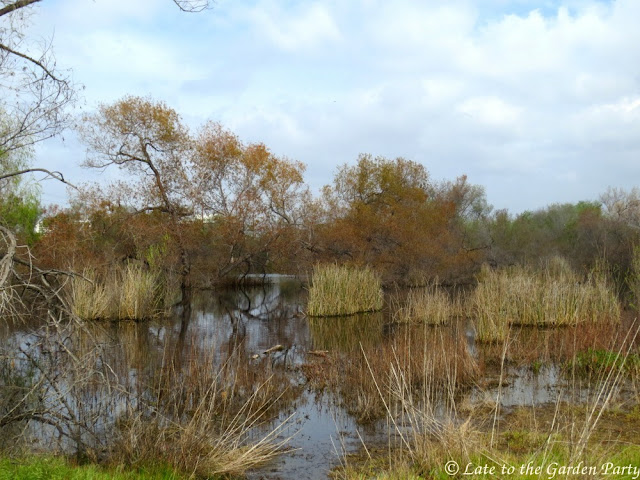Just when my garden was showing signs of spring, winter returned with unusually low temperatures and torrents of rain. The rain started in the wee hours of Thursday morning and continued virtually non-stop through Saturday. Snow fell in areas and at elevations in Southern California that don't normally get any. Newscasters even reported snow falling in the area surrounding the famous Hollywood sign, although there seems to be some controversy as to whether that was actually hail or graupel. We didn't get any snow (or graupel) in my location but we did get a bit of hail, which fortunately didn't last long.
 |
| Although brief, the hail caused minor damage to a few agaves. I think this is the third time in the 12 years we've lived here that we've had hail. |
We had respite from the rain on Sunday, which allowed me to cut flowers for In a Vase on Monday. I started with two stems of Hippeastrum 'La Paz'. Its pot was toppled over by the high winds that accompanied the recent rainstorms and I didn't want to risk losing the flowers to the next storm.
 |
| I probably should have skipped the yellow Freesias but, as they too had been pummeled to the ground by rain, I wanted to use them while I could |
 |
| Top view |
My tree-sized Ceanothus is in full bloom so I took advantage of that in preparing my second arrangement.
 |
| View of Ceanothus arboreum 'Cliff Schmidt' on the back slope |
 |
| I created another blue and white arrangement, heavy on the Ceanothus |
 |
| Back view |
 |
| Top view |
 |
| Clockwise from the upper left: Anemone coronaria, Freesia, Osteospermum '4D Silver', Ceanothus arboreum 'Cliff Schmidt', and Salvia hybrid 'Pozo Blue' |
I saved the Limonium perezii (aka sea lavender) used in one of last week's arrangements and popped it into another vase, accompanied by two stems of Freesia.
As the rain had beaten down the stem of another Hippeastrum 'Rozetta' I had on the patio, I cut its remaining bloom for a tiny vase.
 |
| Its stem was only 2 inches tall so the tiny vase was my best bet. It's sitting on my desk, next to my computer. |
We're expecting another cold rainstorm today. It's forecast to continue into Wednesday. Our season-to-date rain total (starting October 1, 2022) is 13.56 inches, which isn't bad. Our rainy season usually comes to an end in early April so that leaves a pretty good chance we might get to our "old normal" annual average of fifteen inches before then.
For more IAVOM arrangements, visit Cathy at Rambling in the Garden.
All material © 2012-2023 by Kris Peterson for Late to the Garden Party











































